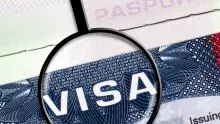Indonesian Rupiah Guide for Smart Travelers
Planning a trip to Indonesia? Don’t get lost in translation—especially when it comes to money! This essential guide to the Indonesian Rupiah (IDR) will help you confidently handle cash, from colorful banknotes to everyday coins. Whether you're shopping at a local market or tipping a driver, understanding the Rupiah can make your trip smoother and stress-free.
A Glimpse into the Identity of the Indonesian Rupiah
Ever wondered what makes the Indonesian Rupiah unique? The Rupiah (IDR) is more than just a currency—it's a reflection of Indonesia's rich culture and economy. Understanding its history, denominations, and daily usage can help travelers and curious minds alike appreciate the value it holds. From vivid banknotes to historical figures printed on each bill, the Rupiah tells a story worth knowing before your journey begins.
Back to topBanknotes: Colorful, Symbolic, and Practical
If you're heading to Indonesia, it's important to get familiar with the local currency—especially the banknotes you'll be using every day. From Rp1,000 to Rp100,000, each Indonesian Rupiah bill has its own color, design, and historical figure that reflects the nation's heritage. Recognizing these features not only helps you avoid confusion, but also gives you a deeper appreciation of the culture behind the currency. Pro tip: Keep smaller denominations handy for markets, taxis, or small vendors who might not accept large bills.
Back to topUnderstanding Indonesian Coins
Think coins are just spare change? In Indonesia, coins play a practical role in everyday transactions—especially for small purchases like snacks, parking, or public transport. The most commonly used Indonesian coins include Rp100, Rp200, Rp500, and Rp1,000, each with distinct sizes, colors, and national symbols that make them easy to identify. Understanding coin denominations can help you avoid overpaying and make your travel experience smoother.
Back to topAre Coins Always Used?
Not all coins jingle their way into daily use in Indonesia. While coin denominations like Rp100 or Rp200 still exist, they’re not always accepted or expected in modern transactions. Many vendors and shops prefer rounded prices, especially in tourist areas, which means smaller coins may rarely leave your wallet. Tip: Carry a few coins just in case, but don’t worry if you can’t find exact change—locals are often flexible.
Back to topFinal Thoughts: Master the Rupiah, Enjoy Your Trip
Traveling to a new country is always easier when you understand the local currency. By getting to know the Indonesian Rupiah—both banknotes and coins—you can make smarter spending decisions and avoid confusion at checkout. From identifying denominations to knowing when coins are useful, a little knowledge goes a long way in making your trip smoother and more enjoyable. So before you land in Indonesia, take a few minutes to master the Rupiah—it’s a small step that brings big peace of mind.
Back to top






Comments
Add new comment